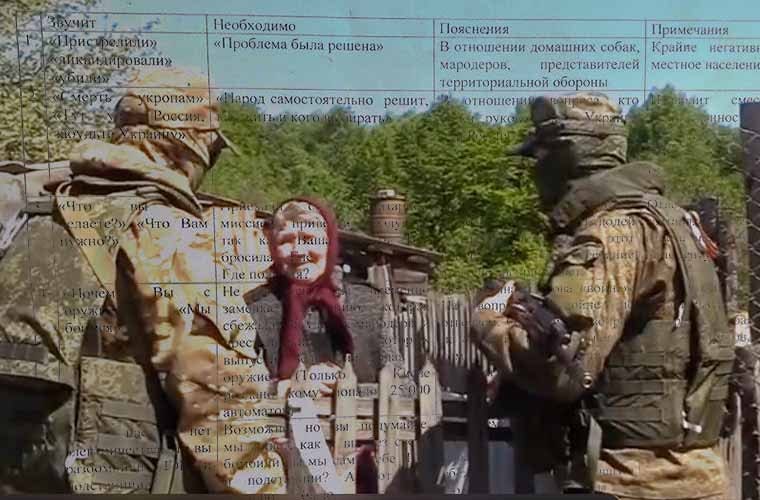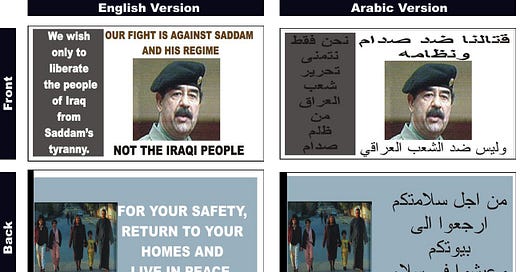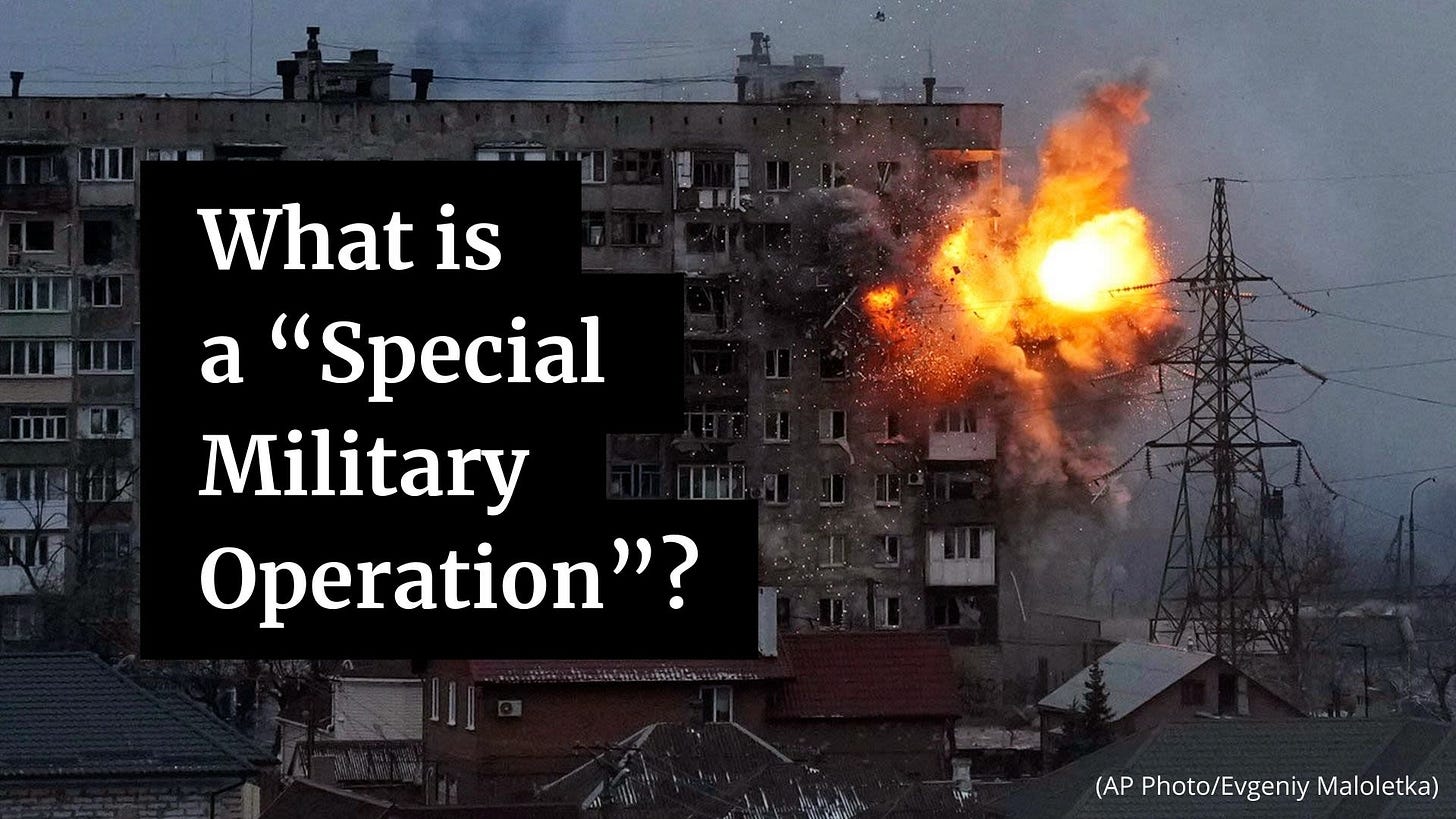Rhet and Info Ops: Rhetoric and Information Warfare in the Iraq War
Information warfare has evolved into a critical aspect of modern conflicts, where the manipulation of information and the psychological impact on both enemy forces and civilian populations can decisively influence the outcome of engagements. This concept is not new; it can be traced back to conflicts such as The Troubles in Northern Ireland, where psychological operations (psyops) played a significant role and as far back as the Cold War. During The Troubles, British intelligence, including figures such as Colin Wallace, used psyops to undermine the Irish Republican Army (IRA). Wallace, a psychological warfare specialist, was involved in operations that disseminated disinformation and propaganda aimed at discrediting the IRA and reducing support among the population. These operations often involved narratives that painted the IRA and its affiliates as criminals and associated them with terrorists, thus influencing public perception and morale, and with documented cases of 'black operations', where false flag ops were purportedly conducted to sow confusion and distrust within the IRA by exploiting “any tendencies to disagreement and rivalry.”

Leaflets and broadcast messages alleged connections between IRA members and at the time, the Libyan regime leader Muammar Qaddafi, who throughout the 1970s and 1980s, was infamous as a leading sponsor of international terrorism, this creation of association disinformation was used in aiming to erode public trust and support. We can see the parallels with the rhetorical operations observed in the Iraq War, which is the focus of this Substack article, where the coalition forces employed extensive psyops. These operations were epitomized by the dropping of millions of leaflets across Iraq, which carried messages designed to demoralize Saddam Hussein’s forces, encourage defection, and minimize civilian support for the regime. In Iraq, tactics were used but on a larger scale and with the integration of modern technology. Leaflets dropped during the Iraq War served various purposes: some were designed to provide information on how to safely surrender, while others spread disinformation about the capabilities and intentions of the Iraqi forces, and some sought to create a positive image of the coalition forces, promising respect for human rights and future stability. These leaflets played a role in the broader strategy of "rapid dominance" or shock and awe, aiming to achieve quick and decisive victory by crippling the enemy's ability to fight and make effective decisions. The psychological impact of seeing the skies filled with leaflets also served as a physical demonstration of the coalition's overwhelming power and reach, further demoralizing the Iraqi forces. Disinformation as a weapon also played a role on both sides, for example, the U.S. military often broadcasted overly optimistic assessments of their progress to demoralize Iraqi forces and sway international opinion and the Iraqi government disseminated false information about the capabilities and intentions of Iraqi forces to both their own people and the global community, aiming to foster a narrative of powerful resistance against foreign invaders.
War. The possibility at last exists that war may be defeated on the linguistic plane. If war is an extreme metaphor, we may defeat it by devising metaphors that are even more extreme. — J. G. Ballard
The Framework of Rhetoric Ops
Narrative Building in Military Operations
Narrative building is a fundamental component of modern military operations, particularly in how these operations are perceived by the public and international communities. The military constructs narratives to meticulously manage the dissemination of information about their actions and intentions. This strategic communication aims to shape perceptions, control the narrative surrounding events, and influence the behavior and beliefs of both domestic and international audiences. For example, during conflict, a military might frame its intervention in another country as a peacekeeping mission or a ‘special military operation’ as we heard in the most recent conflicts in Russia-Ukraine, aimed at restoring order and supporting democratic transitions, rather than an act of aggression. Such framing can help to justify the operation and garner support from the international community, as well as from citizens at home. The narratives are carefully crafted to highlight the legitimacy and necessity of military actions, emphasizing themes such as humanitarian aid, liberation, and the protection of human rights, regardless of the underlying strategic interests. This practice not only affects public opinion but also plays a critical role in diplomacy. By controlling the narrative, militaries can influence diplomatic relationships, manage alliances, and mitigate criticism from international bodies. Narrative building thus becomes a tool not only for justification of military action but also for broader strategic positioning in global politics.
Psychological Operations (PsyOps)
PsyOps are meticulously planned activities that use selective information to influence the emotions, motives, objective reasoning, and ultimately the behavior of target audiences. These operations are not just limited to the battlefield but span across various domains involving governments, organizations, groups, and individuals globally. It involve the distribution of information, sometimes true, sometimes false, and often a mix of both, to create a desired impression. The essence of is to create a psychological impact that complements physical military operations. They can encourage enemies to surrender, populations to support interventions, or allies to contribute more robustly to a coalition. The strategic use can significantly reduce the physical combat needed by breaking down the enemy’s will to fight and fostering support or dissent where needed.

Infrastructure and Human Terrain Mapping
The concept of Human Terrain Mapping is central to modern military strategy, particularly in operations within culturally complex and diverse environments. Understanding the "human terrain"—the social, ethnic, cultural, and economic landscapes of an operational area—is crucial for the design and execution of effective military strategies. This knowledge helps in crafting approaches that are sensitive to local norms and can thus minimize conflict and resistance from the local population. The U.S. Military’s Human Terrain System (HTS) project exemplifies this practice. Teams of social scientists, anthropologists, and linguists are embedded with combat units to map out social structures, tribal dynamics, and local grievances. This mapping enables military planners to understand the motivations of local populations and predict their responses to various military actions. By incorporating this deep socio-cultural understanding into their operational planning, militaries can more effectively engage with local communities, address their concerns, and build cooperation. This strategic integration of human terrain mapping significantly enhances the effectiveness of military operations by reducing civilian hostility and increasing support, thus stabilizing the operational environment more quickly and with fewer conflicts. It is especially useful in insurgency and counterinsurgency tactics, for example, due to American soldiers being unfamiliar with the terrain and complex society, it was used in Afghanistan during the Taliban insurgency and also in Iraq during the 2003 post insurgency situation from the likes of Al-Qaeda and indigenous groups, Sunni vs Shi'ia, and the void opening from the collapse of the central government.

Rhetorical Operations in the Iraq War
The concept of rhetorical operations in warfare is deeply intertwined with the art of persuasion and manipulation. Historically, military engagements have leveraged the power of communication to demoralize the enemy and strengthen the resolve of allies. In the Iraq War, this involved a sophisticated blend of traditional military tactics and advanced psychological strategies aimed at destabilizing Saddam Hussein's regime from within. These operations are grounded in the understanding that the perception of power can be as significant as its actual deployment. By disseminating messages that highlighted the futility of resistance and the inevitability of a coalition victory, the psyops sought to induce surrender and compliance among Iraqi forces, thereby reducing the need for direct combat and minimizing casualties on all sides. These leaflets varied in content but generally conveyed themes of survival, counter-disinformation, and facilitative communication. They were airdropped in areas with strategic importance, ensuring maximum exposure among the targeted Iraqi military and civilian populations. The messages often promised humane treatment to surrendering troops, warned civilians away from combat zones, and discredited the propaganda disseminated by the Iraqi government. Many leaflets focused on survival tips for both civilians and military personnel, instructing them on how to avoid airstrikes and encouraging soldiers to surrender. These messages often carried assurances that those who surrendered would be treated in accordance with international laws of war, aiming to weaken the morale and fighting spirit of Iraqi forces by presenting surrender as a viable and honorable alternative to death on the battlefield. An illustrative example is when leaflets prompted the surrender of Iraq's 51st Division without significant resistance. This not only saved lives but also expedited military objectives with minimal coalition casualties. These leaflets was their role in countering Iraqi state propaganda. By providing factual information about the state of the war and exposing lies propagated by the Hussein regime, the coalition forces aimed to build credibility and trust among the Iraqi people. This was crucial in maintaining a psychological advantage and ensuring that the narrative of liberation, rather than occupation, took precedence. An example of such impact is reflected in the widespread distribution of leaflets that contradicted Iraqi claims about the intent and actions of coalition forces, which helped to maintain public order and compliance among Iraqi civilians during the invasion phase Leaflets also played a role in shaping the post-war expectations of the Iraqi people. They depicted a future of freedom, democracy, and prosperity under a new regime free from Saddam's tyranny. These messages were designed to foster goodwill towards the coalition forces and facilitate a smoother transition to a new government.
Thus we see that the strategic deployment of rhetoric and psyops in modern military conflicts has proven to be a pivotal tool in shaping perceptions, influencing behaviors, and achieving military objectives. From the historical examples of The Troubles in Northern Ireland to the comprehensive leaflet campaigns in the Iraq War, it is evident that controlling the narrative and managing information can decisively impact both the course and outcome of conflicts. These methods not only aim to weaken the enemy's resolve and operational capabilities but also strive to secure the hearts and minds of the civilian populace, thereby facilitating smoother transitions in post-conflict scenarios. The evolution of rhet ops from simple propaganda to complex, integrated strategies reflects a broader understanding of information warfare as a multifaceted domain.
Appendix
Clark, A. M., & Christie, T. B. (2005). READY . . . READY . . . DROP! A Content Analysis of Coalition Leaflets Used in the Iraq War. Gazette: The International Journal for Communication Studies, VOL(67)(2), page range. London, Thousand Oaks & New Delhi: Publisher. ISSN: 0016-5492.
Gabrys, J. (2004). Leaflet Drop: The Paper Landscapes of War. Invisible Culture: An Electronic Journal for Visual Studies, Issue 7, Spring.
Ridolfo, A., & Hart-Davidson, W. (2019). Rhet Ops: Rhetoric and Information Warfare. Publisher: Place of Publication.






